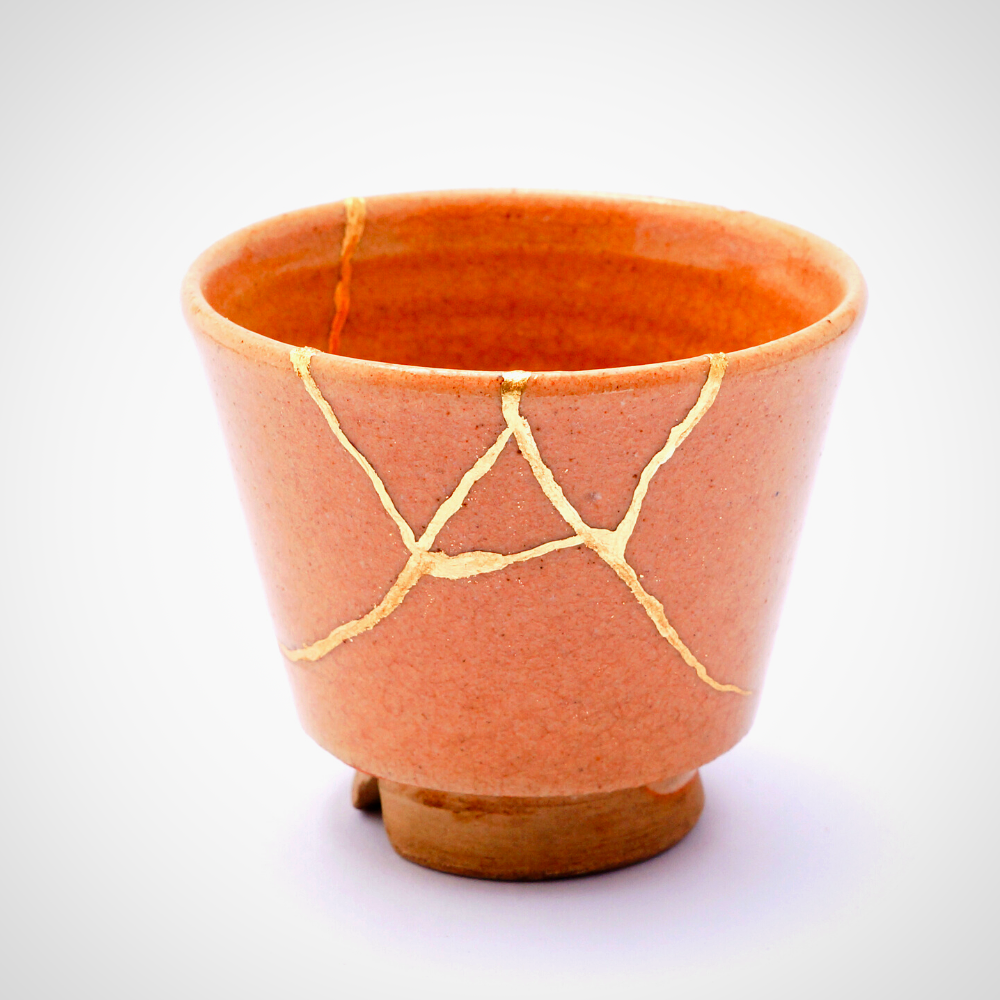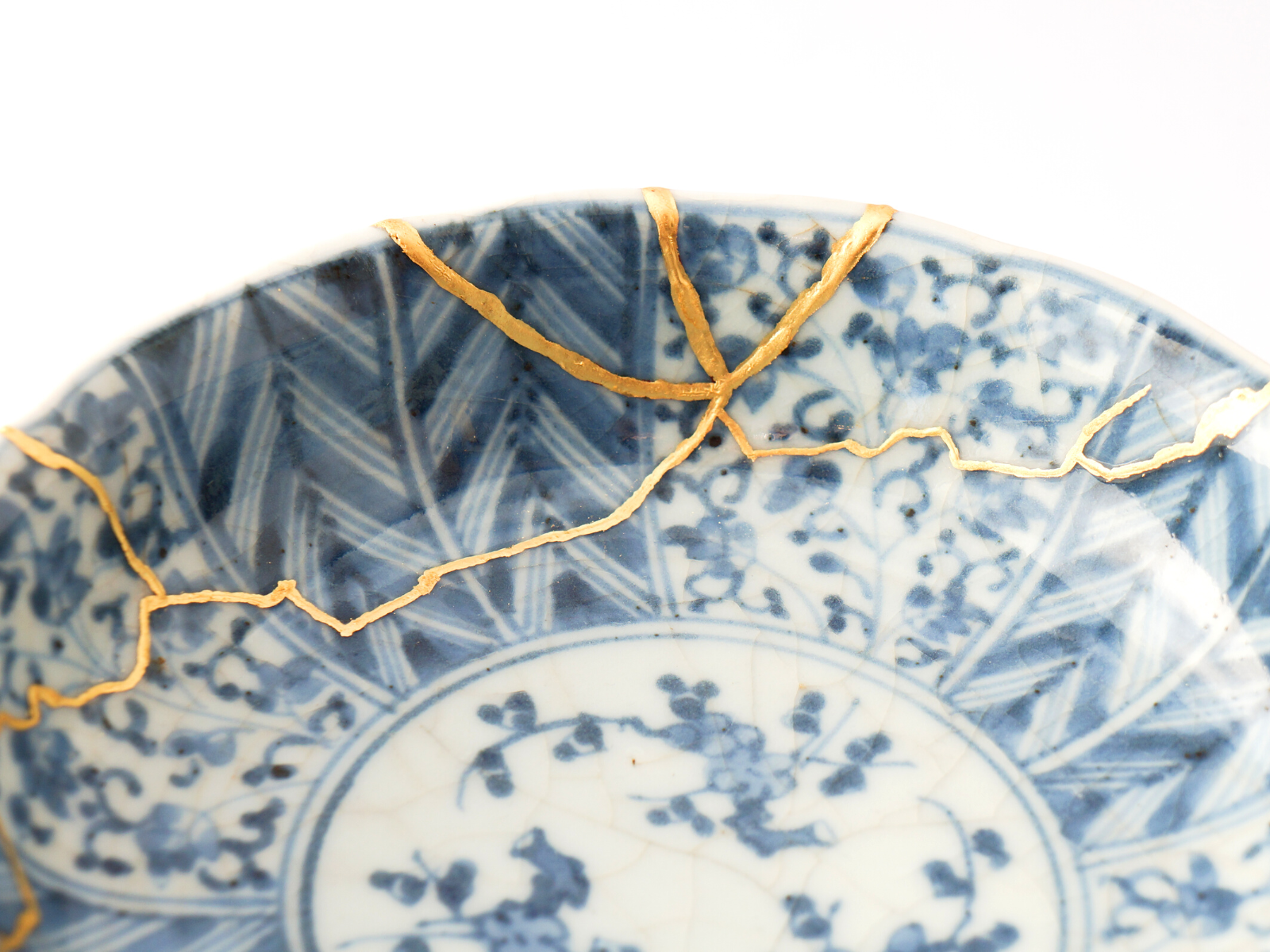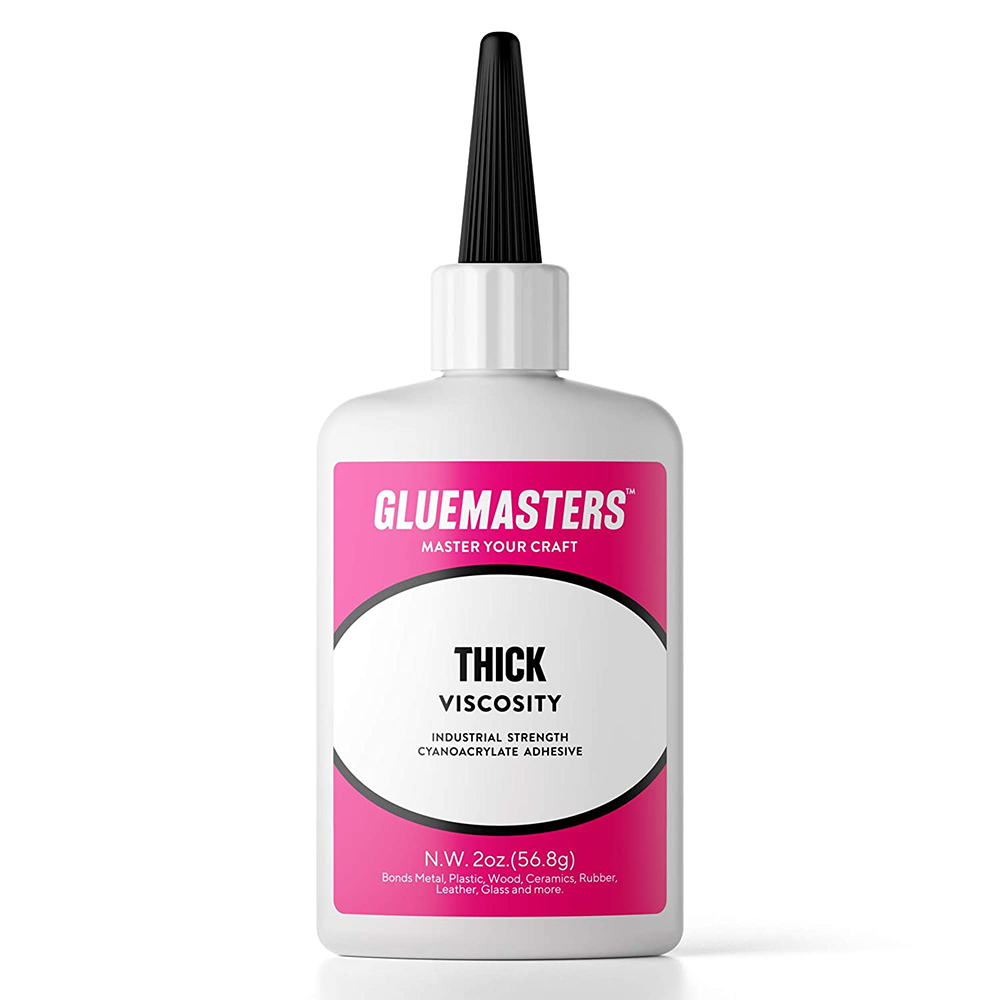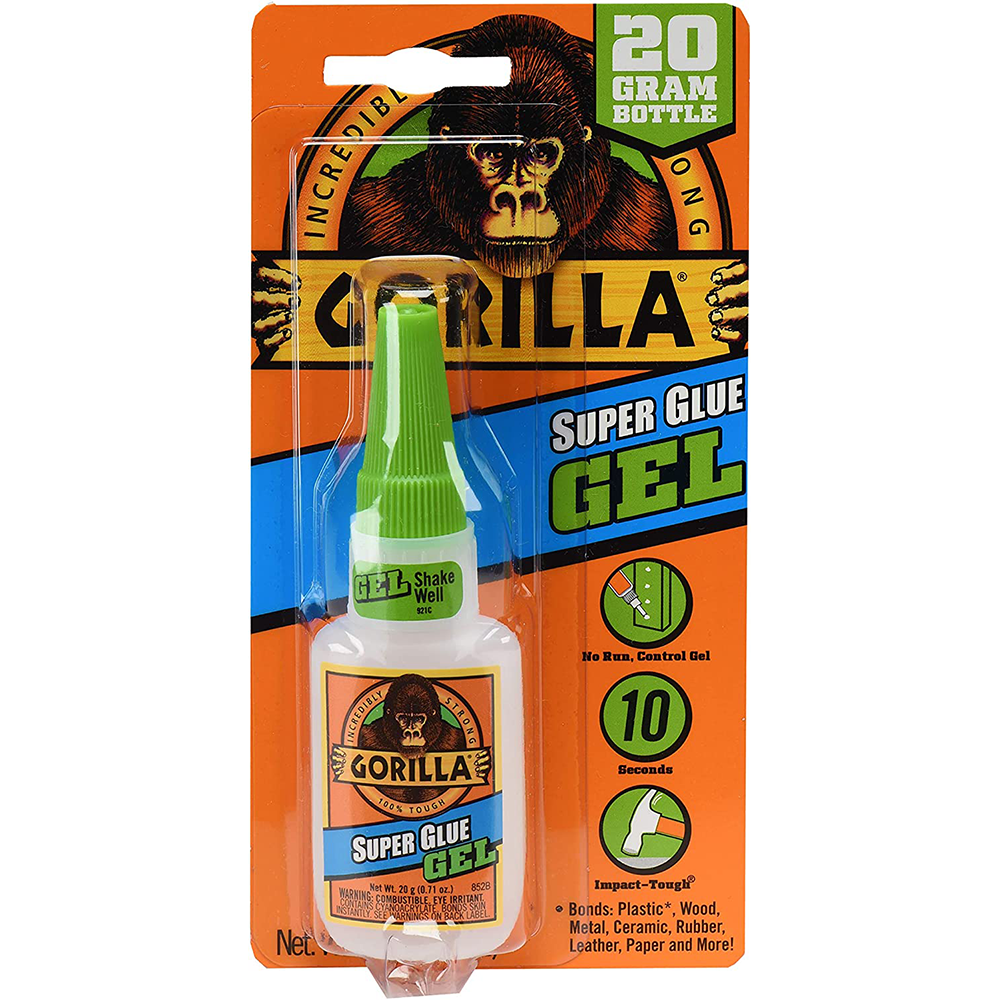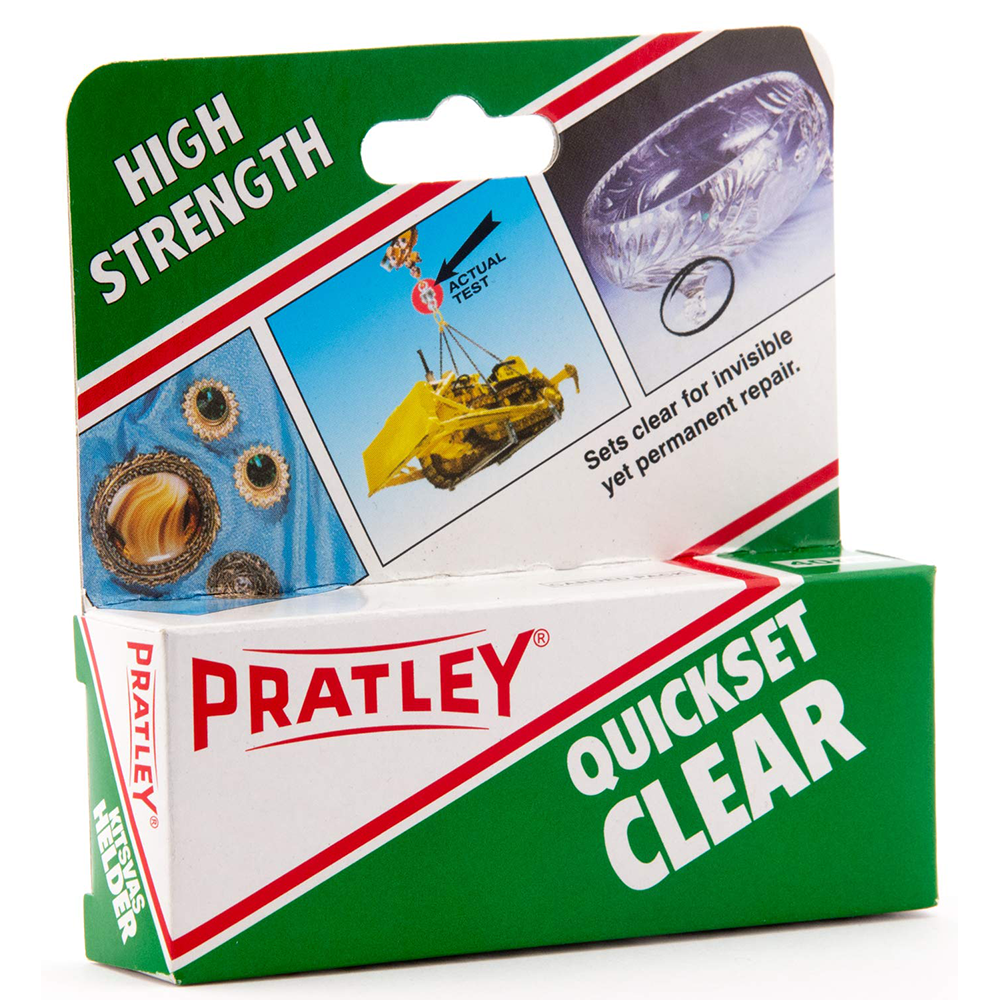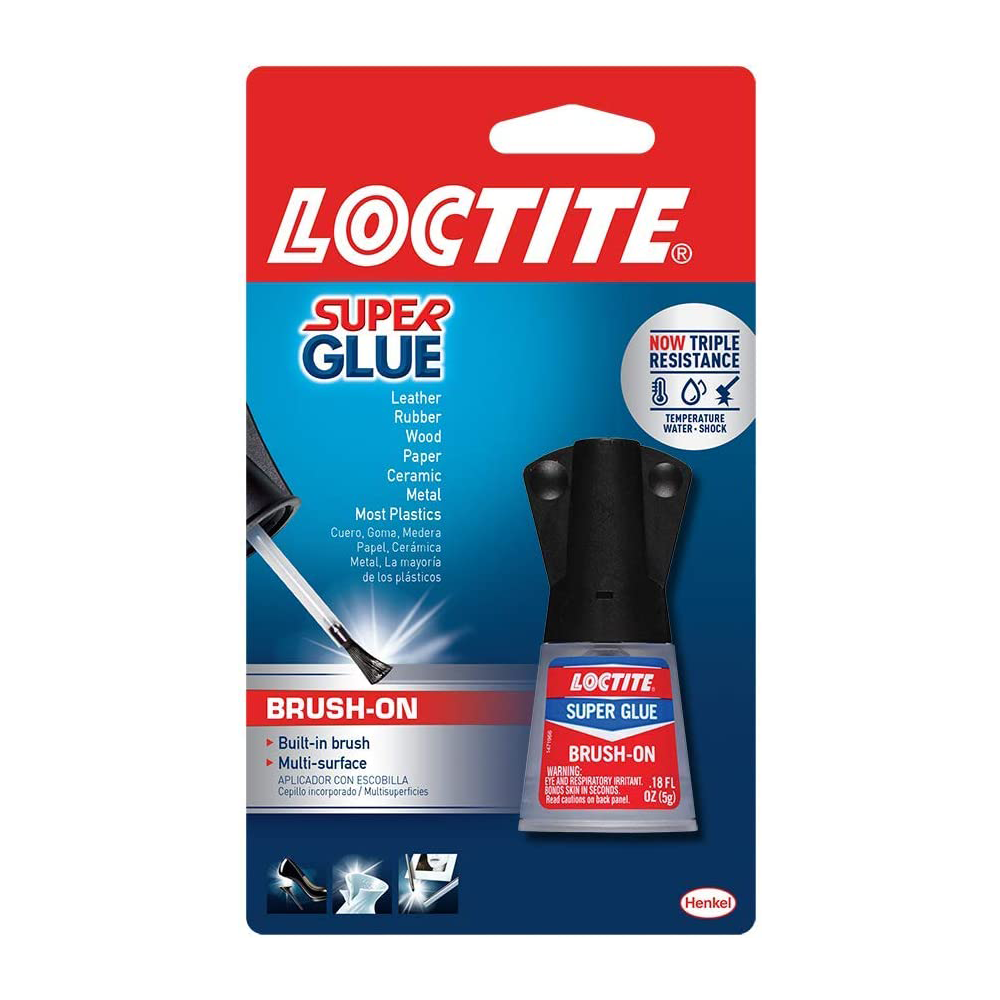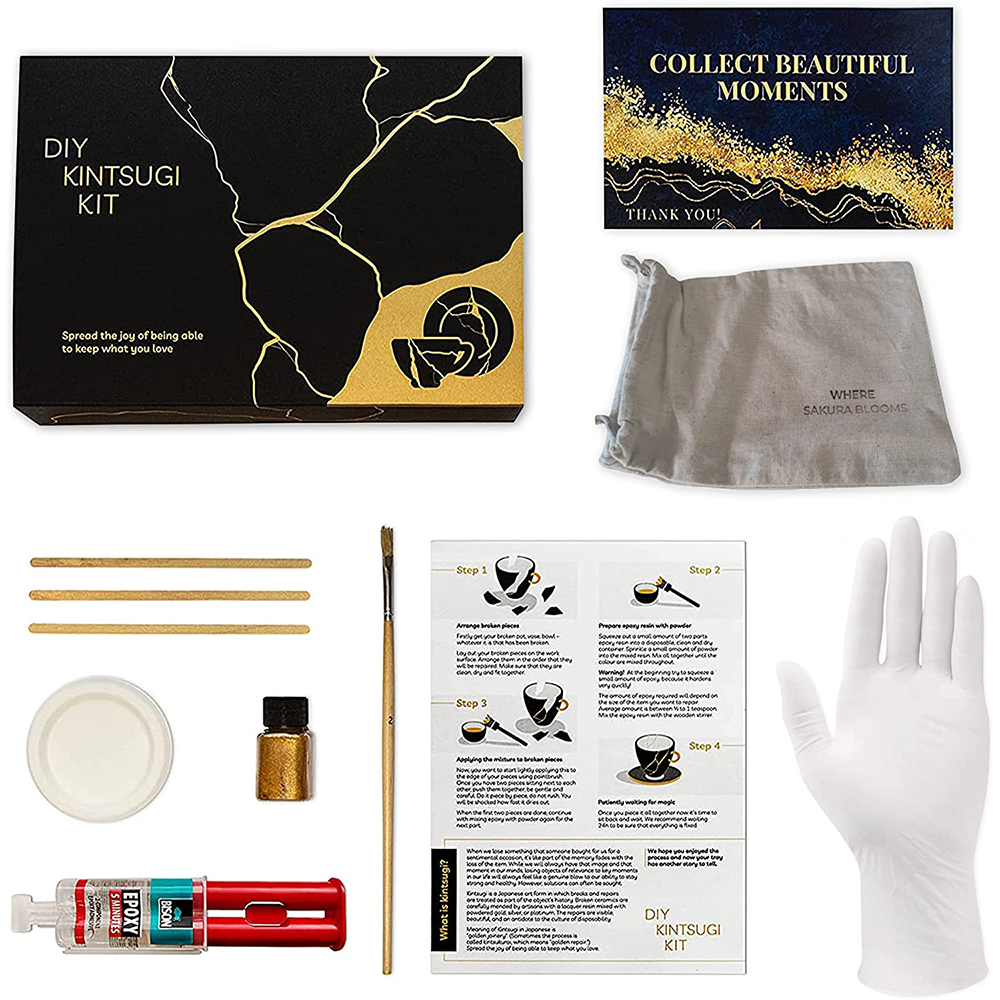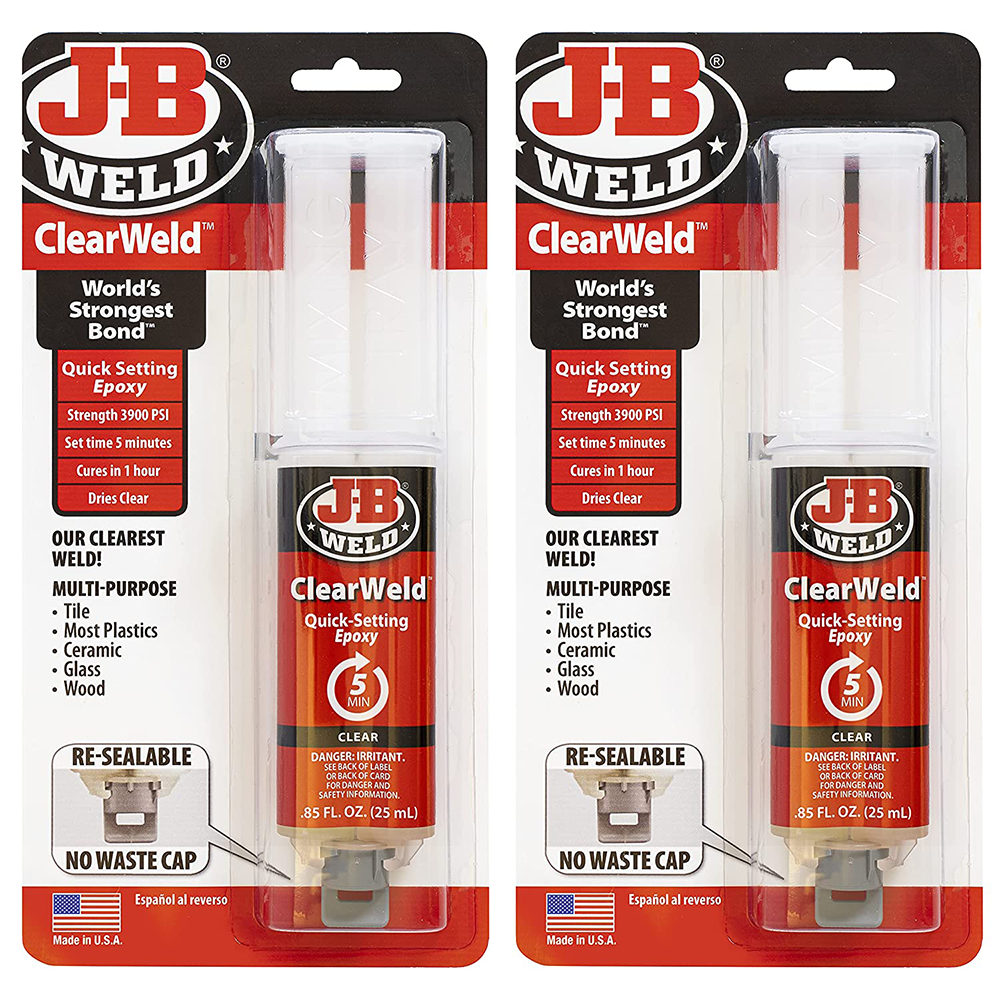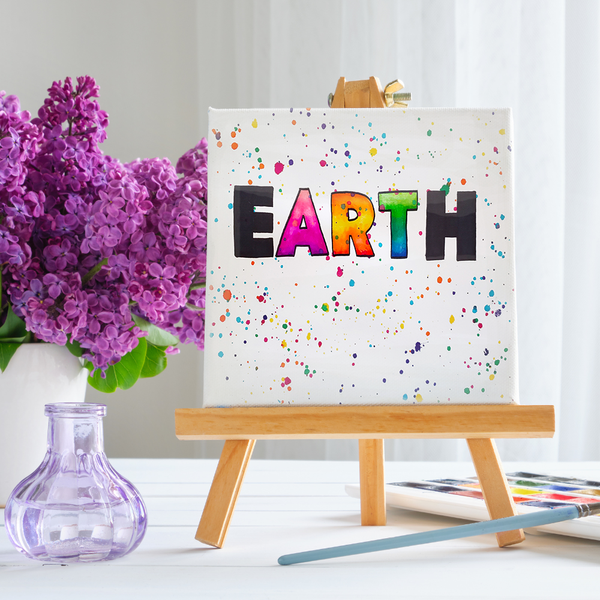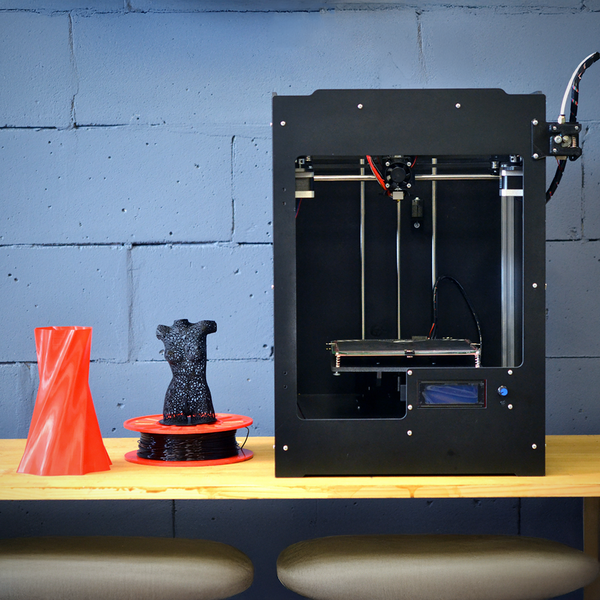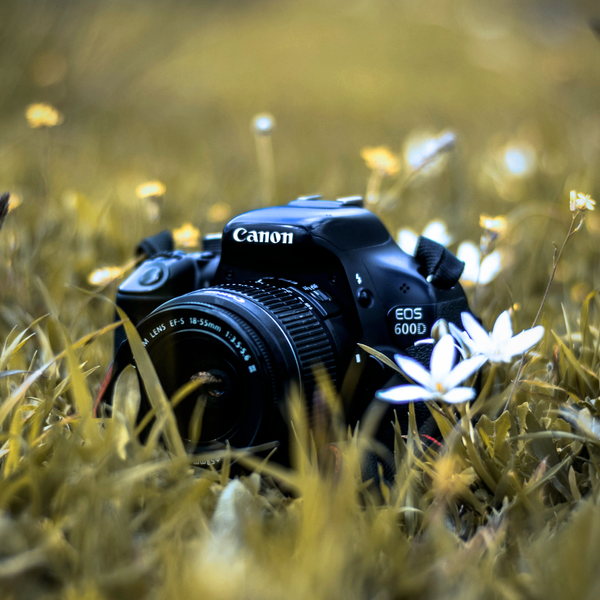If you're like us, you probably love spending your free time creating beautiful pieces of art.
You adore your ceramic pieces, but what do you do when they meet the dreaded fate of breaking?
We feel your pain.
That's why we've put together this article discussing the best ceramic adhesives.
With the right adhesive, you can fix your broken bowls and other ceramics and continue creating beautiful pieces of art.
Not all glues are created equal, so it can be tough to find the right one for repairing ceramics.
Don't worry, we're here to help.
In this article, we'll discuss the different types of glue available and which ones work best for repairing ceramic bowls.
Whether you're a budding artist or someone who likes to fix things around the house, keep reading to find the perfect ceramic glue for you!
Keep reading to find the best ceramic glue for your art needs!
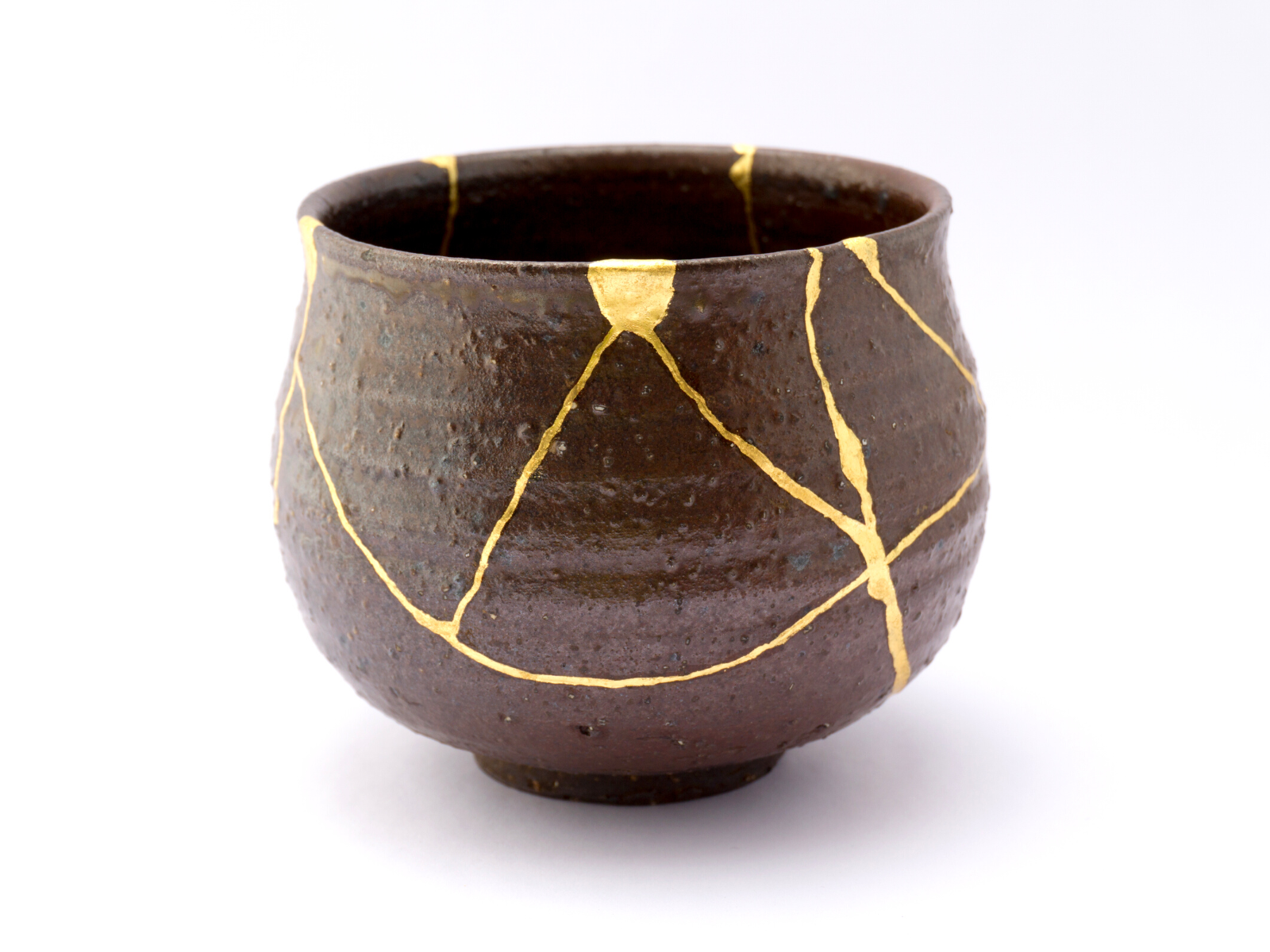
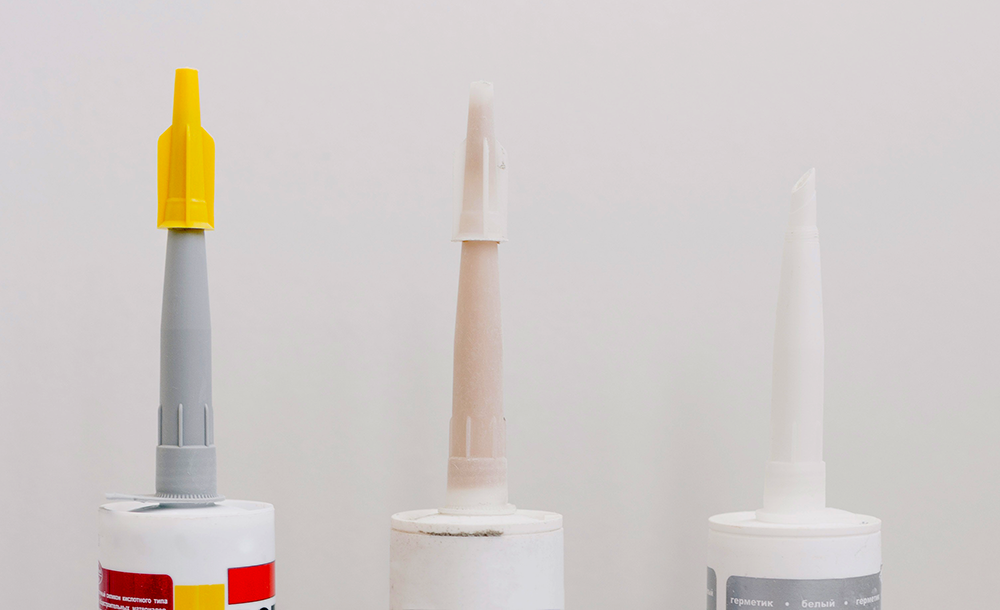
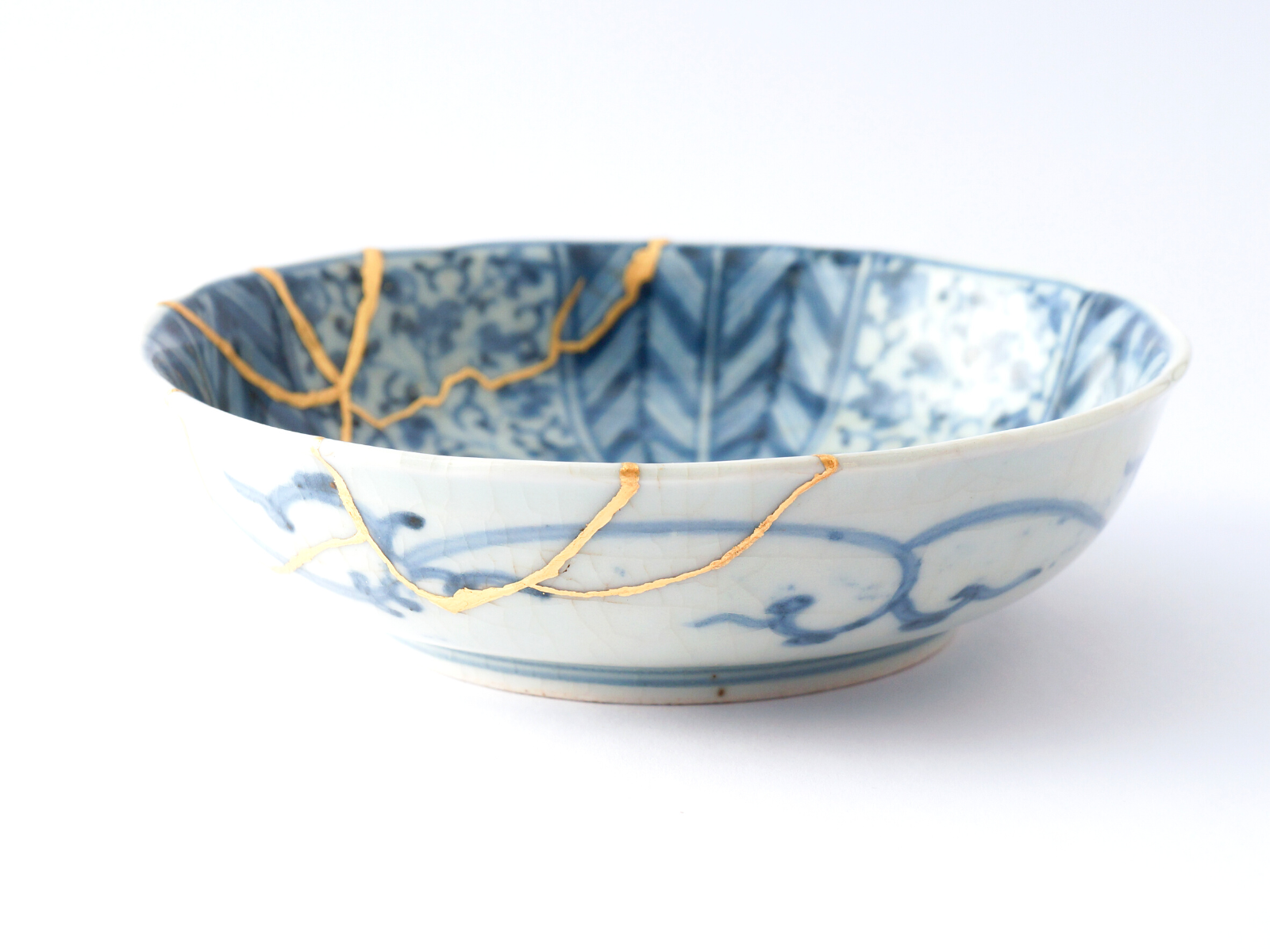
How We Choose Our Selections
Broken ceramics are heartbreaking, but they don't have to be the end of your favorite pottery piece.
It's easy to feel defeated when you drop or chip your favorite ceramic mug, but with the right glue you can fix it like new.
We've found the best glues for ceramics so that you can fix your pieces quickly and easily.
Whether you're a beginner or an experienced artist, we've got the perfect product for you.
We’ve personally read thousands of reviews on Amazon to find the best ceramic glues.
Don’t let your precious pottery pieces fall to ruin; restore them with ceramic glue and keep them for years to come.
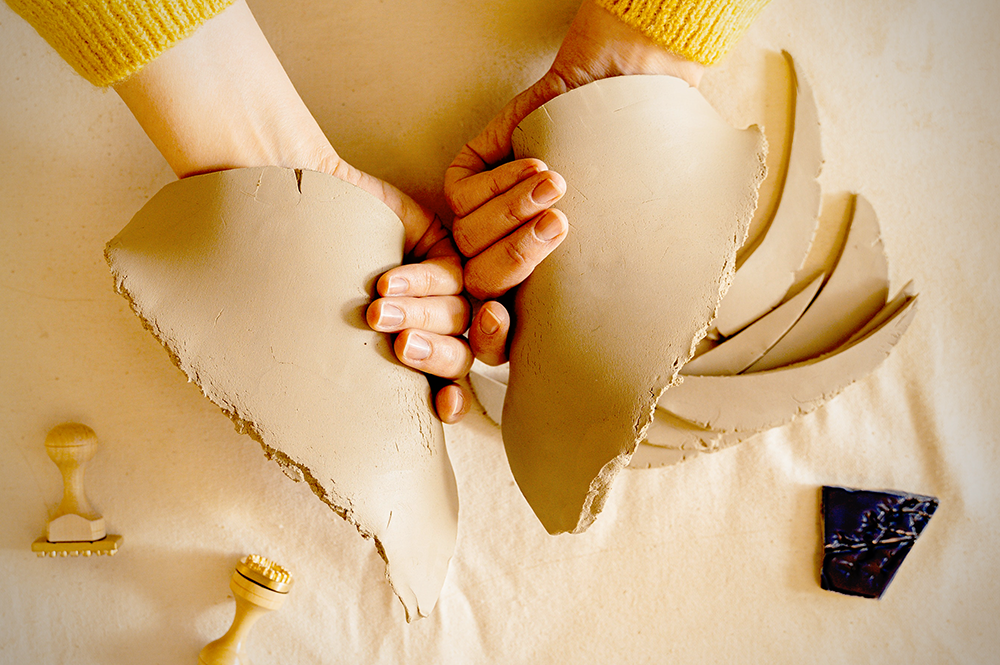


Why We Love It
Searching for a premium super glue that can handle any project?
Look no further than Glue Masters!
Their industrial-strength adhesion is perfect for ceramics, wood, household repairs, and more.
The thick viscosity allows better control and less mess, making projects, models, puzzles, and more a breeze.
Plus, the extended shelf life and easy-to-use formula makes this glue a must-have for any toolkit.
When the going gets tough, reach for Glue Masters!
What You Should Know
If you want a quick and easy way to fix ceramic items, Glue Masters has the perfect solution with their super glue.
This heavy-duty adhesive sets in just 60 seconds, providing a fast and convenient way to make repairs.
With a nice, even flow, it's easy to apply the glue and get a seamless finish.
Plus, the one-year shelf life ensures that you can use it for all your future ceramic repair needs.
Since it's been lab tested and crafted by cyanoacrylate specialists, you can be confident that you're getting a high-quality product.
Glue Masters is a small business that has been dedicated to providing superior craftsmanship since 2014.
When you purchase this Amazon's Choice product, you're supporting a small company that takes pride in their work.
They recommend working in a well-ventilated area with the glue to avoid any fumes. W
Whether you're looking to fix a ceramic vase or mug, Glue Masters has the perfect solution for you, so pick up some today for all your repair needs!
Why We Love It
Want a glue that can tackle any repair job?
Gorilla super glue gel has you covered.
With its thick, no-run gel formula, this glue is perfect for a variety of surfaces, including ceramics, plastic, wood, rubber, paper, leather, and more.
Thanks to its anti-clogging cap, this glue will stay fresh and not dry out time and time again.
Plus, it dries within 10-45 seconds, so you can get your ceramic repairs done quickly and easily.
Don't let a little damage ruin your day; reach for Gorilla super glue gel and get the job done right.
What You Should Know
Gorilla glue is a versatile adhesive that can be used for a variety of projects.
It comes in a .71 oz bottle and Gorilla recommends only using one dab of glue per square inch because excessive amounts of glue can delay the dry time, or worse, cause the bond to fail.
They emphasize the importance of waiting 24 hours for a full cure and of protecting the glue from moisture to ensure performance and re-usability.
With so many great qualities, it’s no surprise this ceramic glue is an Amazon #1 Best Seller.
Grab some Gorilla glue today, and see the difference it will make!
Why We Love It
Looking for a reliable epoxy glue that can bond a variety of surfaces?
Pratley epoxy ceramic repair kit has the answer!
This high-strength adhesive is perfect for fixing broken household items, such as ceramic vases, stone sculptures, glass windows, metal tools, and more.
With its quick-drying formula, you can easily achieve a seamless repair that will last for years to come.
Plus, Pratley epoxy is virtually invisible when applied, making it the perfect choice for discreet ceramic repairs.
What You Should Know
Pratley's versatile epoxy is a ceramic glue that can be used to repair a variety of different materials.
This Amazon's Choice product is a 2-part epoxy that works great with ceramics, glass, plastic, metal, stone, concrete, and porcelain.
The 2 parts need to be mixed before applying and to dry for 48 hours, but the bonds hold securely.
This product is perfect for anyone who needs a reliable adhesive for their ceramic projects.
Whether you're repairing a broken vase or gluing together a ceramic sculpture, Pratley's epoxy will get the job done.
Don’t let a broken household item ruin your day; pick up a Pratley epoxy repair kit today!
Why We Love It
Want a super glue that can stand up to the toughest situations?
Look no further than Loctite brush-on super glue.
This powerful adhesive dries transparent and sets in seconds, making it ideal for a wide range of repairs.
It comes in a spill resistant bottle and is equipped with a brush applicator for precise application.
Plus, it features triple resistance to temperature, water, and shock, making it perfect for use on a variety of surfaces, including ceramics, rubber, metal, wood, most plastics, and paper.
Next time you need a tough adhesive that can get the job done right, reach for Loctite brush-on super glue.
What You Should Know
While ceramic glue might not be the first thing you think of when looking for a super glue, it actually has a lot of great qualities that make it ideal for certain projects.
Loctite brush-on ceramic glue is one of the best ceramic glues on the market, and for good reason.
It provides fool-proof application and the convenient, compact bottle easily stores anywhere.
Plus, the brush-on/snap-lid design means you can easily reuse it time after time.
If that wasn't enough, the brush also saves your fingers from the calamity of being glued together.
While this glue might cost more than some options, you'll always have good luck with Loctite products because the quality has them lasting longer.
It’s no surprise customers highly recommend this Amazon’s Choice product.
If you're looking for a ceramic glue that will get the job done right, look no further than Loctite brush-on ceramic glue.
Why We Love It
Looking to give your broken ceramics a second life?
Many glues will repair your broken ceramics, but not all glues leave them looking amazing afterwards.
With Where Sakura Blooms Kintsugi glue repair kit, you can breathe new life into your old, broken pieces.
This special Japanese technique transforms “flaws” into stunning character, making breaks and repairs part of the ceramic’s history.
Even the broken can become beautiful, so don't toss out your broken ceramics.
Keep what you love and see the old transform into something incredibly new with Where Sakura Blooms Kintsugi glue repair kit.
What You Should Know
Do you have a ceramic mug that you love but accidentally dropped and broke?
Or maybe you have a vase that’s been in your family for generations that has seen better days.
With Sakura Blooms Kintsugi repair kit, you can easily fix these items and give them new life.
This complete starter kit comes everything you need to get started: ceramic glue, instructional booklet, powder, mixing sticks, brush, and gloves.
The instructions are easy to follow, and customers love how stunning the golden shimmer of the bond is.
While the process can be a bit messy, it’s a worthwhile experience that leaves your items more beautiful than ever before.
This is a perfect glue to add to your arsenal, and it makes the perfect gift, especially for clumsy individuals.
Don’t throw out those broken ceramic items just yet; with Sakura Blooms Kintsugi repair kit, you can have them looking as good as new in no time.
Add some dazzling glamor to your ceramics today with this Kintsugi repair kit!
Why We Love It
If you want a reliable, quick-setting glue that can bond almost anything, look no further than J-B Weld 5-minute epoxy.
This clear glue is perfect for bonding ceramics, metal, glass, tile, wood, and most plastics.
The syringe applicator makes it easy to mix the glue in a 1:1 ratio, and the resealable cap prevents leakage or drying out so you can use it multiple times.
With a strength of 3900 PSI, this is one glue you can count on for all your bonding needs.
What You Should Know
There's no need to put off those repairs and improvements any longer.
With J-B Weld epoxy, you can get the job done quickly and easily.
This heavy-duty glue is perfect for all kinds of projects, both big and small.
With its superior performance and quality, you can be sure that your repairs will last.
J-B Weld 5-minute epoxy is an Amazon's Choice product and is known for the World's Strongest Bond, so you can rest assured that your repairs will hold up.
Plus, their epoxy is easy to use: just mix the two parts together, apply it to your surface, and let it cure for an hour.
Why wait?
Get started on those projects today with J-B Weld!
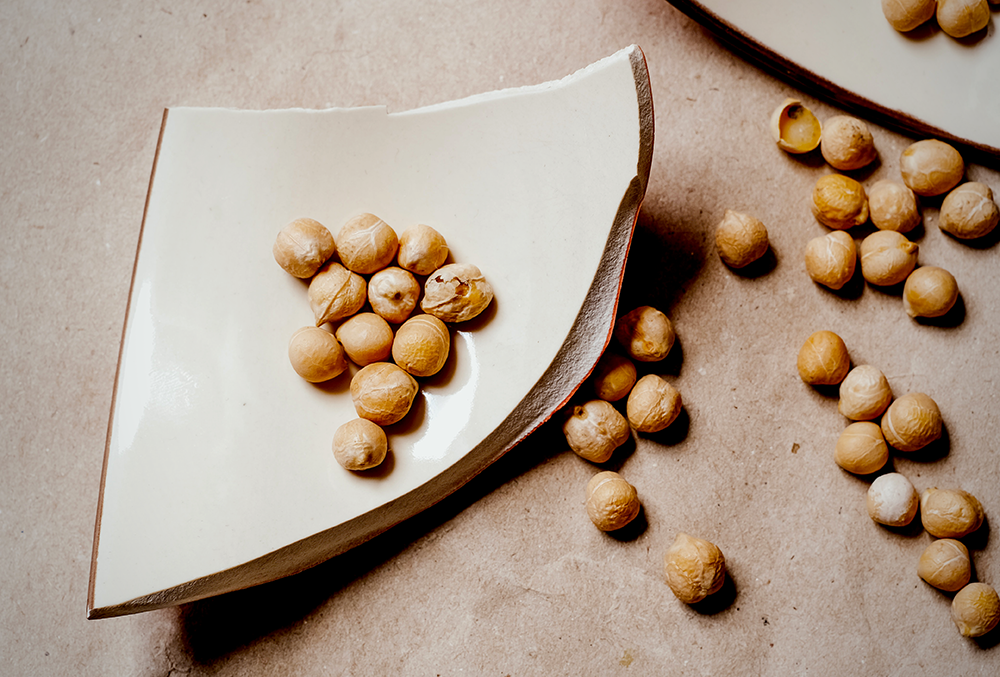
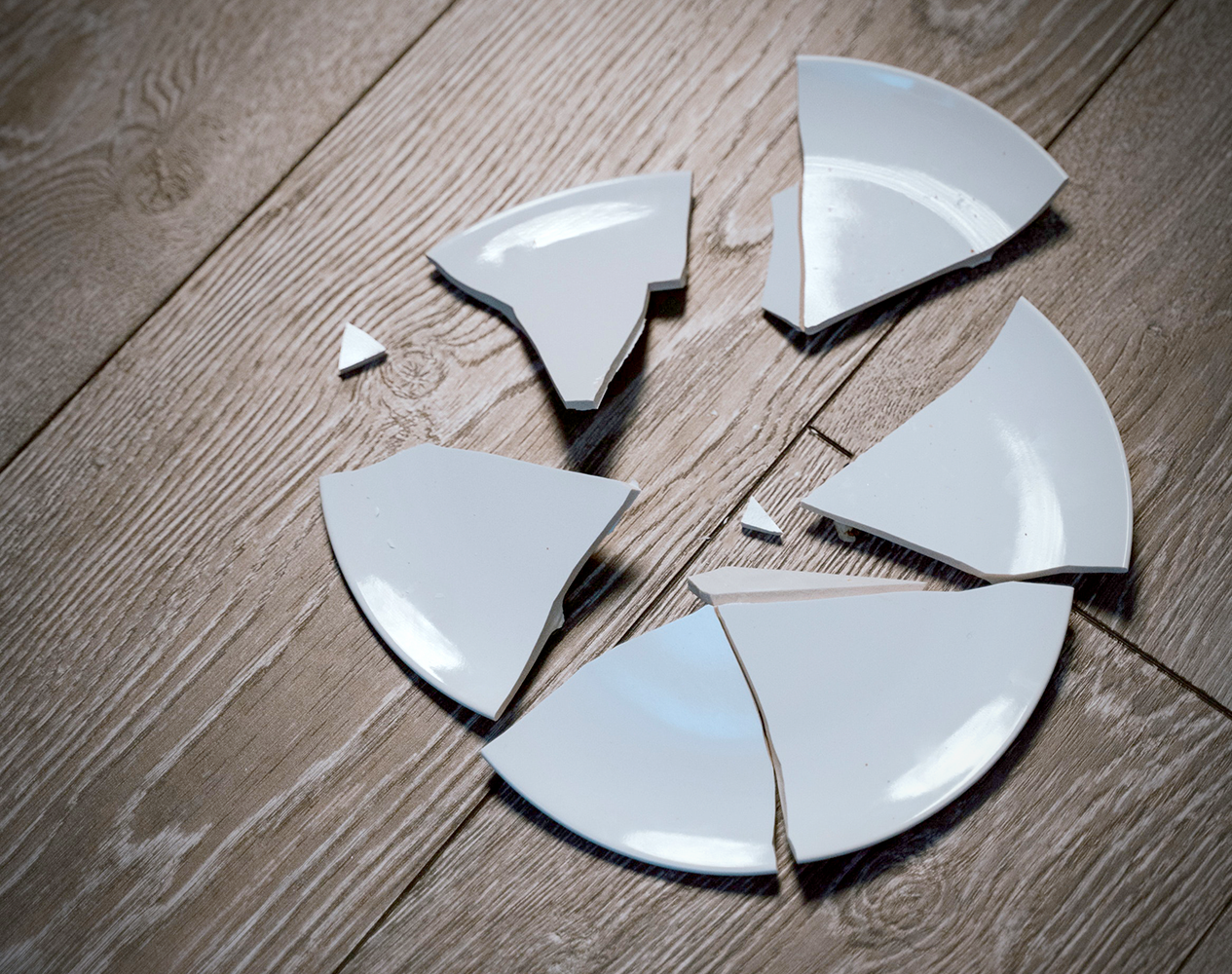
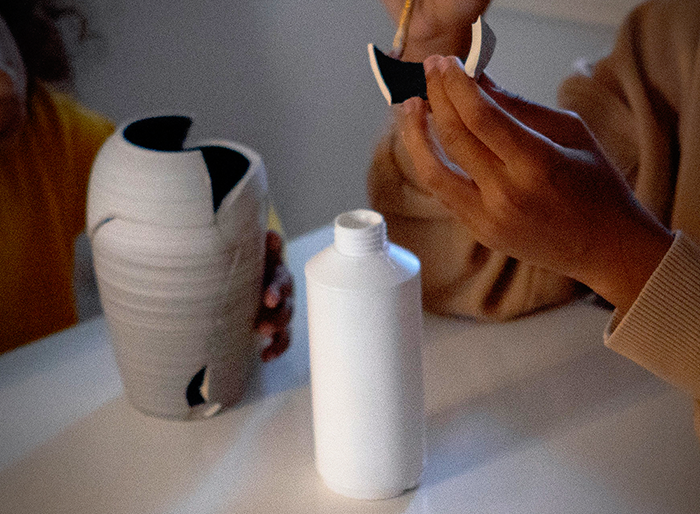
Ceramic Glue FAQs
When looking for new art supplies and the perfect adhesive, it can be an overwhelming process.
There are countless options, so it's difficult to know where to start.
Sorting through the endless choices for ceramic glues is a hassle.
We've compiled a list of some of the most frequently asked questions about glue for ceramics, so you can make an informed decision before purchasing.
Whether you're looking to expand your art kit or for the perfect gift, this guide will leave you feeling confident in your selection.
Can broken ceramics be repaired?
Yes, broken ceramics can be repaired.
However, the repair process can be difficult and may not be completely successful.
The first step in repairing a broken ceramic is to remove any pieces of the ceramic that are still attached to the object.
Once the loose pieces have been removed, the next step is to clean the surface of the ceramic.
This can be done using a brush or a cloth.
Once the surface has been cleaned, it is time to apply the adhesive.
There are many different types of adhesives available, so it is important to choose one that is compatible with both the ceramic and the adhesive material.
The adhesive should also be strong enough to hold the ceramic together while it dries.
Once the adhesive has been applied, the ceramic should be placed in a warm, dry place to allow it to set.
How do you glue ceramics back together?
Ceramics can be glued back together using a number of different adhesives, although it's best not to use regular glue.
Two-part epoxy adhesives are popular because they are very strong and durable.
They can also be used to bond a wide range of materials, including ceramics, glass, wood, and metal.
To glue ceramics back together, first clean the surface of both pieces.
Apply the adhesive to one of the surfaces and press the two pieces together until the adhesive cures.
Let the glue cure for 24 hours before using the piece.
The type of glue you use depends on your repair project.
Porcelain or ceramic repairs can call for different types of glues, like super glues, epoxy, or glass cement glue.
You might use Gorilla waterproof polyurethane glue, Devcon epoxy glue, waterproof glue, porcelain glue, or Krazy glue.
The different varieties have different chemical composition.
Some are better for nonporous surfaces, porous materials, ceramic tiles, porcelain adhesive, broken ceramic pieces, vertical surfaces, a thin space, and other materials.
A good ceramic glue will produce a strong bond and be water resistant.
You'll want to be mindful of excess glue when repairing your ceramic item.
How do you repair chipped ceramics?
There are a few methods you can use to repair chipped ceramics.
One method is to use a ceramic patch, putty, or ceramic glue filler to fill in the chip.
You can also try using glue to hold the pieces together.
If neither of those methods work, you can also try using a toothpick or needle to apply some of the ceramic adhesive directly to the chip.
How do you glue broken ceramic figures back together?
There is no one-size-fits-all answer to this question, as the best method of repairing a ceramic figure will vary depending on the specific situation.
However, some possible methods include using a strong adhesive such as epoxy, using wire to reinforce the break, or using a toothpick or needle to apply the glue directly to the break.
In general, it is important to be very careful when repairing ceramic figures, as they are often quite delicate and can easily break again if not handled correctly.
It is also important to make sure that the adhesive or other repair method used is completely dry before exposing the figure to any kind of moisture.
Otherwise, the figure could become damaged beyond repair.
Be patient, do you research, and pick the best glue for ceramic needs accordingly.
How much glue should you use when repairing ceramics?
There is no definitive answer to this question as the amount of glue you should use when repairing ceramics will depend on the specific repair you are attempting.
Generally speaking, however, it can be better to err on the side of using too much glue rather than too little.
This will help to ensure that your repair is stronger and less likely to come apart over time.
The drawback of using more glue is that it often means longer cure times, so keep that in mind.
While you can err on the side of using more glue, be mindful not to use excessive amounts of glue.
When it comes to specific types of glue, there are a few different options that can be used for repairing ceramics.
Depending on the materials you are working with and the size/scope of the repair, any of these options could work well:
-Universal Adhesive: This all-purpose adhesive works well for repairs that require extreme strength and flexibility.
-Cyanoacrylate Adhesive: This glue is ideal for repairs that need to be done quickly, as it sets very fast.
-Epoxy Adhesive: This glue is perfect for repairs that require a lot of strength, as it creates a very strong bond.
-Super Glue: This glue is great for small repairs or for bonding together two smooth surfaces.
If you are unsure about which glue to use for your particular repair, it is always best to consult with a professional.
They will be able to offer advice and guidance based on your specific repair needs.
Does glue quality matter when repairing ceramics?
Yes, the quality of glue does matter when repairing ceramics.
The quality of the glue affects the strength of the repair and how likely it is to fail over time.
There are several factors to consider when choosing a glue for repairing ceramics.
The most important factor is the type of adhesive used.
There are two types of adhesives: solvent-based and water-based.
Solvent-based adhesives are stronger than water-based adhesives, but they are also more toxic and more difficult to use.
Water-based adhesives are less toxic, easier to use, and just as strong as solvent-based adhesives.
Another important factor is the cure time of the adhesive.
Cure time is the amount of time it takes for the glue to dry and set.
Some adhesives have very long cure times, while others set very quickly.
The type of glue you choose will depend on your specific repair needs.
If you need a quick repair, you will want to choose an adhesive with a short cure time.
If you have more time and are looking for a stronger repair, you will want to choose an adhesive with a long cure time.
The last factor to consider is the price of the glue.
Glues can range in price from a few dollars to over one hundred dollars.
The type of glue you choose will depend on your budget and your repair needs.
If you need a quick fix, you can choose a less expensive glue.
If you are looking for a long-lasting, high-quality repair, you will need to choose a more expensive glue.
No matter which glue you choose, the most important thing is to make sure that your repair is done correctly.
A well-done repair will last for years and can help to restore your ceramic piece to its original condition.
Whether you are repairing a family heirloom or your favorite mug, the best glue for ceramic projects can help to make the repair process quick and easy.
Choose the best glue for ceramic repair needs and be sure to follow the instructions carefully to ensure a successful restoration.
With the right glue, your ceramic piece, whether a bowl, figure, or ceramic tile, will be good as new in no time!
Should you use more than one type of glue when fixing ceramics?
The best glue for clay pottery depends on the type of ceramics you're fixing.
If your clay projects not too badly damaged, a strong adhesive like super glue should do the trick.
If they're more severely cracked or chipped, a two-part epoxy is probably a better option.
Just make sure to use the right type of glue for the job.
Using the wrong type can lead to even more damage.
Always do your research first!
There are a few different types of glue that can be used to repair ceramics.
The type of glue you use will depend on the severity of the damage and your personal preferences.
-Super Glue: This glue is great for small repairs or for bonding together two smooth surfaces.
-Epoxy Adhesive: This glue is perfect for repairs that require a lot of strength, as it creates a very strong bond.
-Polyurethane glue: This glue is perfect for filling cracks and gaps.
It dries quickly and creates a strong, flexible bond.
-Silicone glue: This glue is perfect for repairs that need to be waterproof.
It can also be used to fill cracks and gaps.
-Acrylic glue: This glue is perfect for bonding two smooth surfaces together.
It dries quickly and is very strong.
No matter which glue for ceramic projects you choose, the most important thing is to make sure that your repair is done correctly.
A well-done repair will last for years and can help to restore your ceramics to their original condition.
Choose the right glue for your repair needs and be sure to follow the instructions carefully to ensure a successful repair.
The best glue will likely be a waterproof glue, but it depends on your specific needs.
You might need to fix ceramic tiles, porcelain, cracks, surface repairs, chips, or other materials.
Keep in mind what your ceramic item needs and select the best glue for ceramic needs.
How long should glue dry when repairing ceramics?
It depends on the type of glue for ceramic pieces that is being used.
Some glues take just a few minutes to dry, while others may need up to 12 hours.
It's best to read the instructions on the glue bottle.
If you are using a non-water-based glue, be sure to allow enough time for it to completely dry before trying to use or wash the repaired item.
Otherwise, you may end up with a mess on your hands!
Following the provided directions is your best bet for flawless repairs.
Is super glue good for ceramics?
When it comes to gluing ceramic surfaces together, super glue is often seen as one of the best options.
This is because super glue has a very strong bonding agent that can hold two surfaces together securely.
Additionally, super glues dry quickly, so you won’t have to wait long for your repair to be complete.
That said, there are some things to keep in mind when using super glues on ceramics.
First of all, make sure that the surfaces you’re trying to glue together are clean and dry.
Any dirt or moisture will reduce the strength of the bond.
Also, roughen up the surface of the ceramics before applying the glue; this will help create a stronger bond.
Finally, be sure to use a small amount of glue; too much glue can cause the surfaces to warp.
With these tips in mind, super glues can be an excellent option for repairing ceramics.
No matter which glue you choose, the most important thing is to make sure that your repair is done correctly.
A well-done repair will last for years and can help to restore your ceramic piece to its original condition.
Choose the right glue for your repair needs and be sure to follow the instructions carefully to ensure a successful repair.
What is the best porcelain glue?
There isn't a single "best glue" for porcelain, as the best adhesive will vary depending on the specific application.
Some of the most common adhesives used for bonding porcelain include epoxy glues, acrylic glues, and silicone sealants.
When choosing an adhesive for bonding porcelain, it's important to consider the type of porcelain being bonded, as well as the surface finish and condition of both pieces.
For example, if you are trying to glue two pieces of glossy porcelain together, you will need an adhesive that can bond well to both surfaces and has a high level of strength and durability.
Silicone sealants are often a good choice for this type of repair.
On the other hand, if you are trying to glue a piece of porcelain to an uneven or porous surface, you will need an adhesive that can fill in any gaps and create a strong, watertight seal.
In this case, epoxy glue or acrylic glue may be your best option.
No matter which glue you choose, the most important thing is to make sure that your repair is done correctly, so make sure to read the instructions of your chosen glue.
A well-done repair will last for years and can help to restore your ceramic piece to its original condition.
The best glue is one that will work for your specific needs.
How can you make ceramic repairs look nicer?
One way to make ceramic repairs look nicer is to use a color that is similar to the original ceramic clay project.
Another way is to use a color that contrasts with the original ceramic.
If you choose a color that is similar to the original ceramic, the repair will be less noticeable.
If you choose a color that contrasts with the original ceramic, the repair will be more noticeable.
No matter which color you choose, the most important thing is to make sure that your repair is done correctly.
A well-done repair will last for years and can help to restore your ceramic piece to its original condition.
What is Kintsugi?
Kintsugi, often referred to as "golden joinery," is the Japanese art of repairing broken pottery with lacquer and gold.
The word "kintsugi" literally means "golden repair."
"Kin" means gold with "tsugi" meaning join.
This technique is said to have originated in the 15th century, during the Muromachi period in Japan.
It was during this time that a shogun named Ashikaga Yoshimitsu broke a favorite tea bowl of his and, not wanting to simply throw it away, had it repaired with gold lacquer.
He was so pleased with the results that he began commissioning these kinds of repairs for other broken pieces in his collection.
Kintsugi went on to become quite popular in Japan during the Edo period.
At this time, the aesthetic of wabi-sabi, which values imperfection and celebrates the patina of age, was in vogue.
Kintsugi perfectly embodies this aesthetic, as it takes something that is broken and makes it even more beautiful.
Nowadays, kintsugi is still practiced in Japan and has even gained popularity in other countries.
If you are interested in trying your hand at this ancient art form, there are many kits available that contain everything you need to get started.
Kintsugi is a beautiful way to repair broken pottery.
Not only does it make the repairs less noticeable, but it also adds a unique and beautiful patina to the piece.
Instead of trying to hide the break or "flaw," Kintsugi draws attention to it, emphasizing its importance in the pottery's history and making an intentional statement.
The technique of Kintsugi is probably the best glue for ceramic pots because you're adding to the character of the piece.
While traditional glue for ceramic repairs get the job done, adding glitzy flair to your broken pieces is a lot of fun!
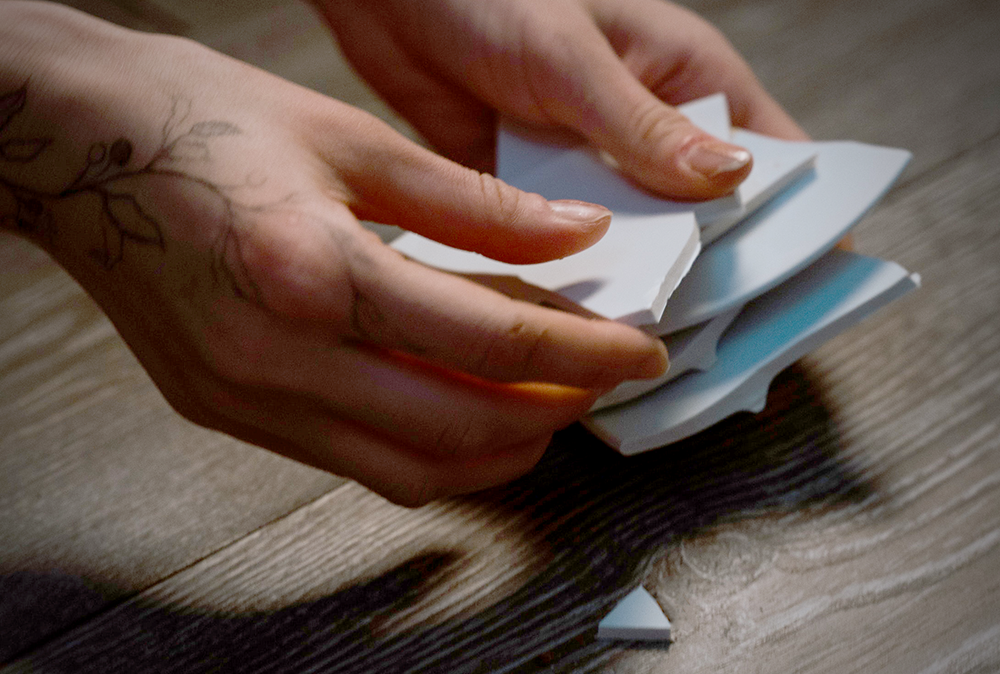
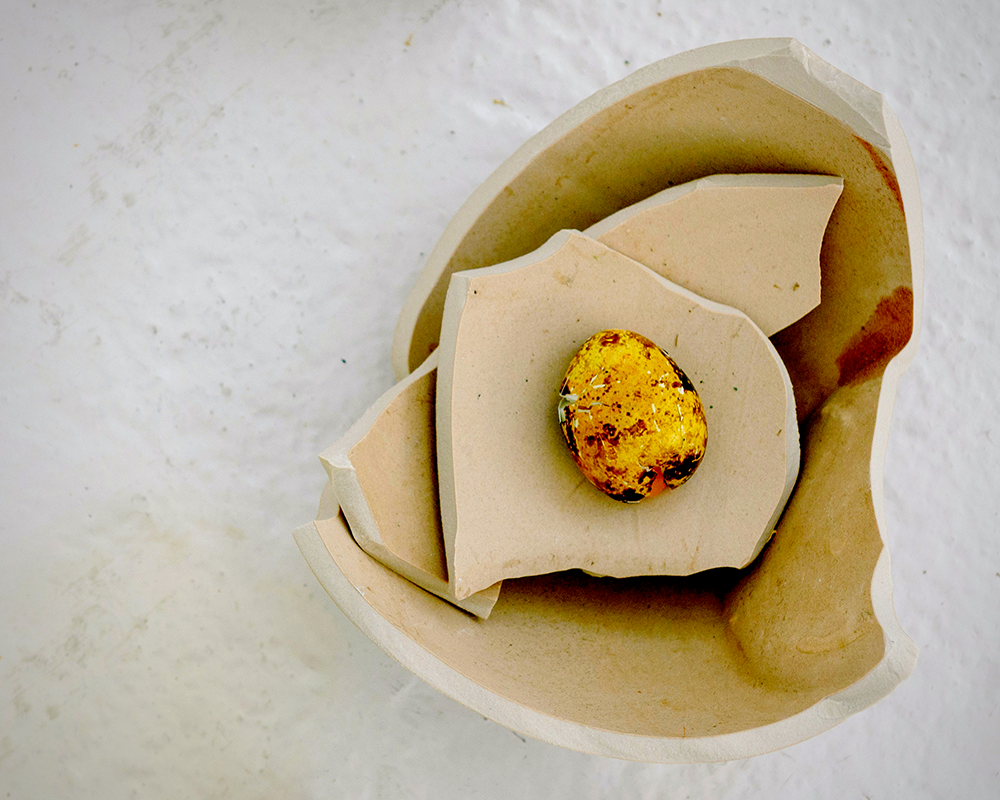

The Best Glue for Ceramics
So, what is the best glue for ceramic projects?
After hours of research, reading thousands of Amazon customer reviews, we’ve found the top picks for all levels of artists, restorations, and DIY projects.
Whether you're an expert, a beginner just starting out, or somewhere in-between, there is a ceramic glue perfect for your next project or repair!
Hopefully, our findings have simplified the selection process, allowing you to make an informed decision and walk away happy with your new ceramic glue!
Whichever glue you choose, we hope you can bond, repair, and restore all of your ceramic projects!
Don't forget to tap the button to check Amazon for the best prices on ceramic glues!
Thanks for reading and here's to your beautiful restorations!

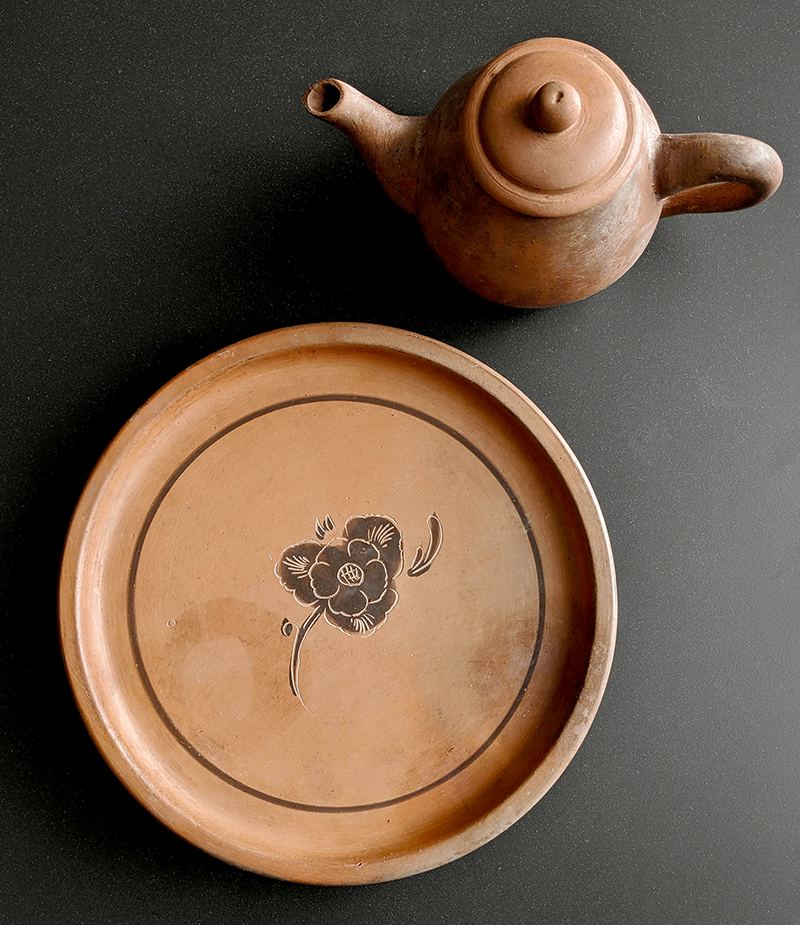

Want to learn more? Check out NJroute22's video!
If you'd like to see artwork I've made, you can find some at Redbubble, TeePublic, and TeeSpring.
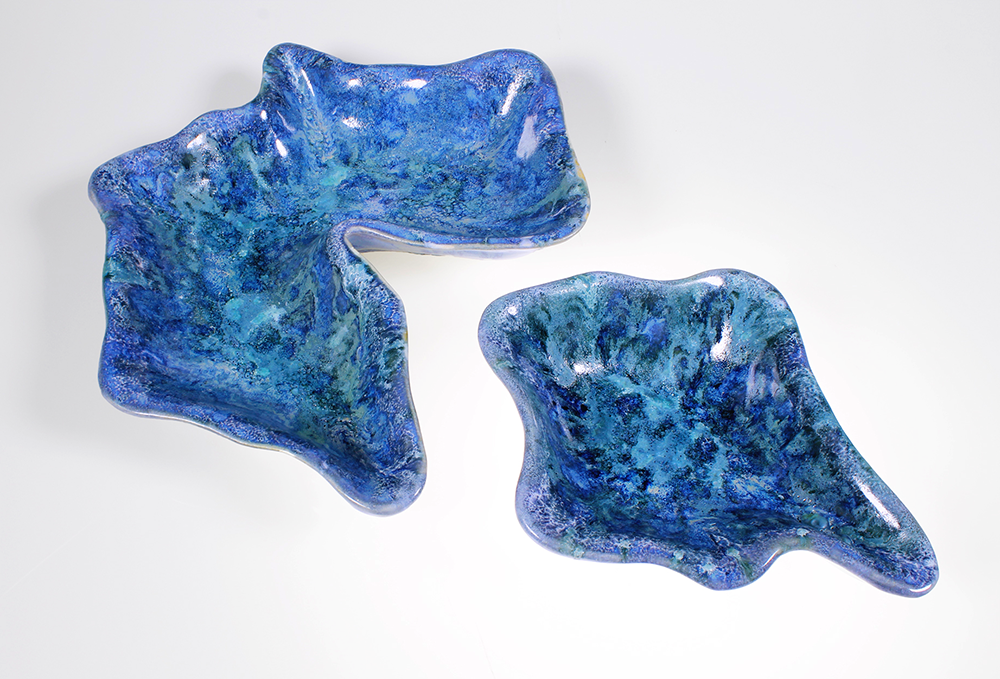
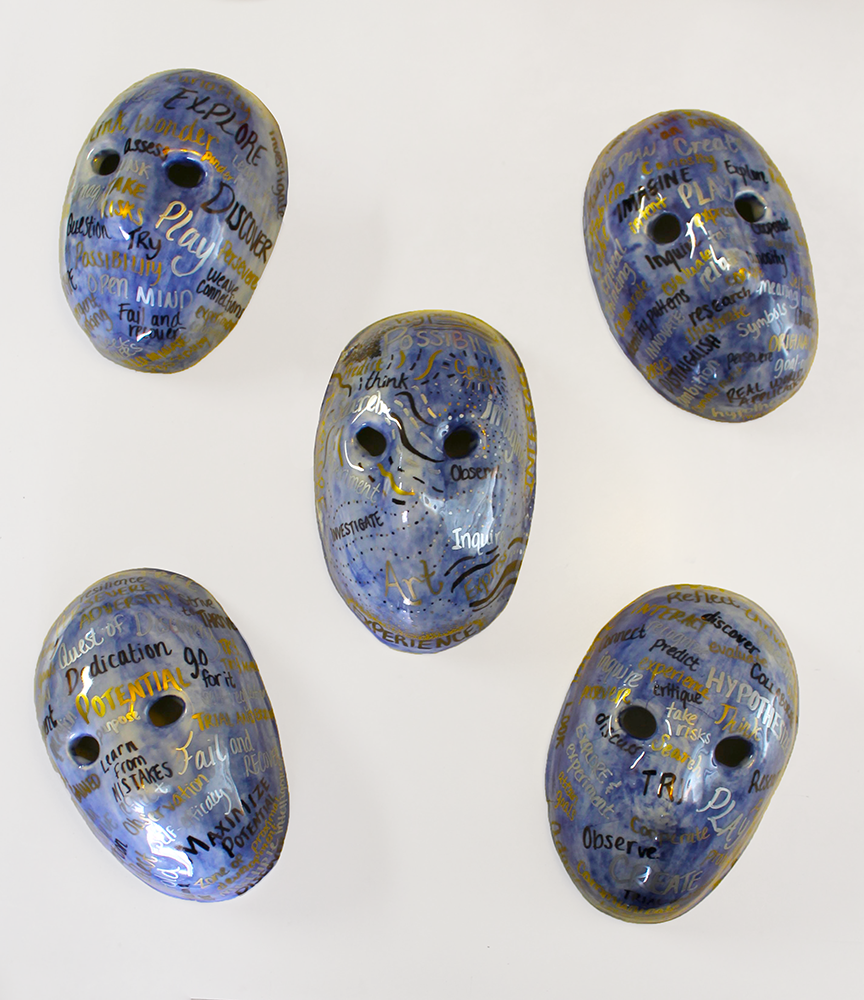

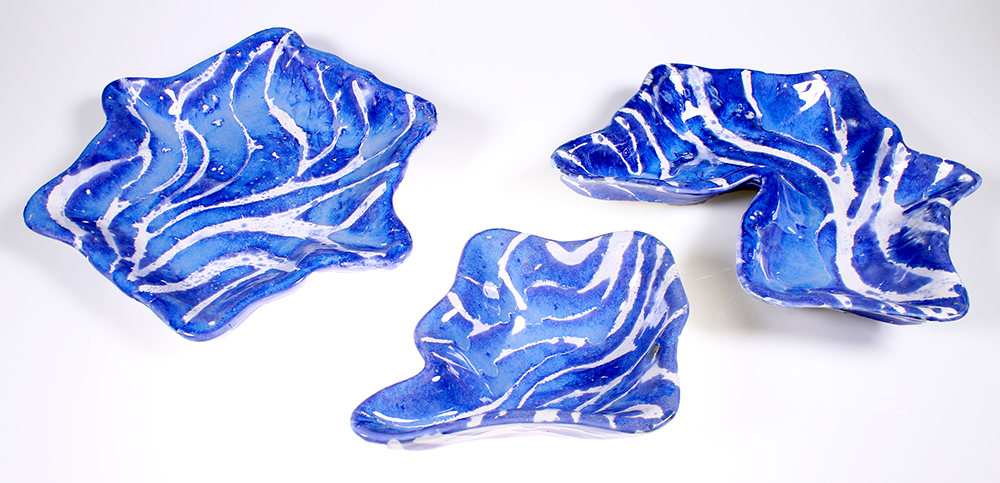
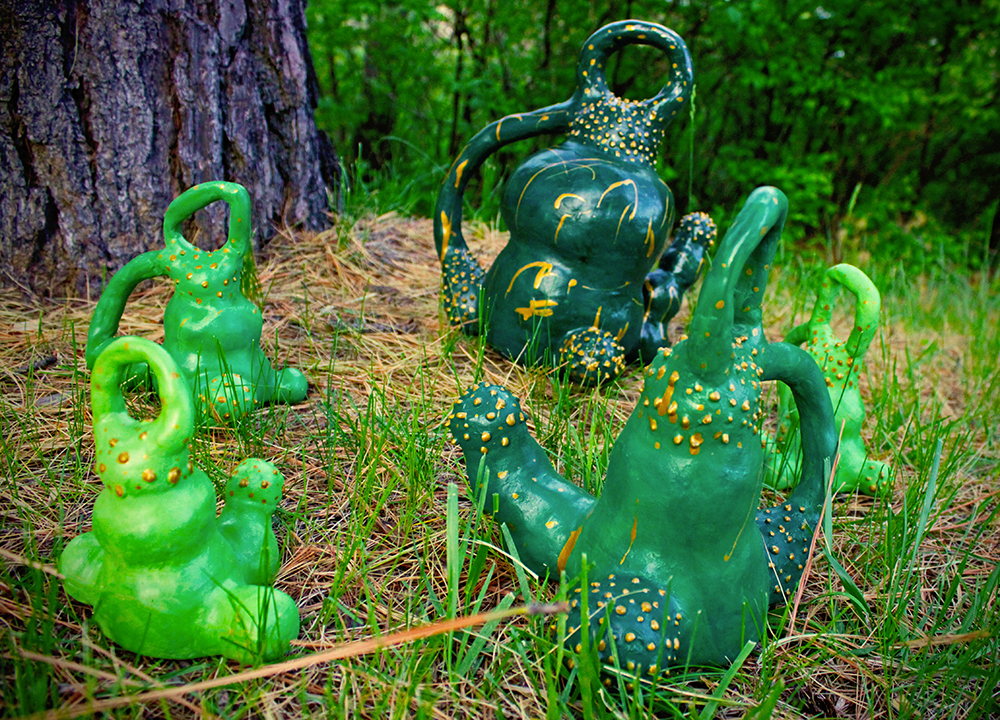
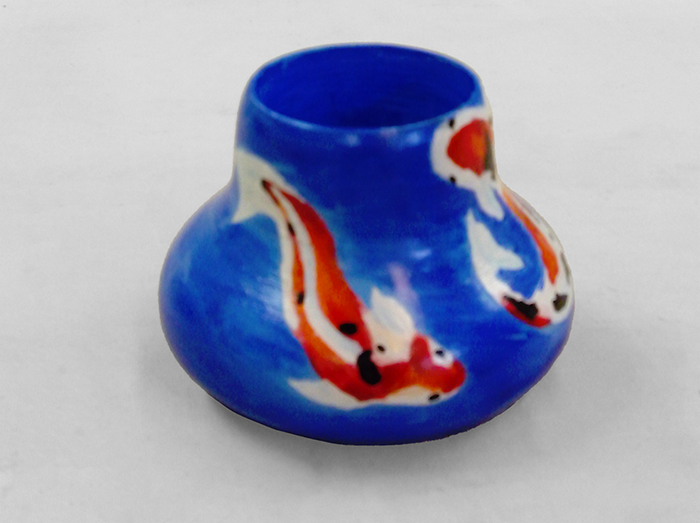
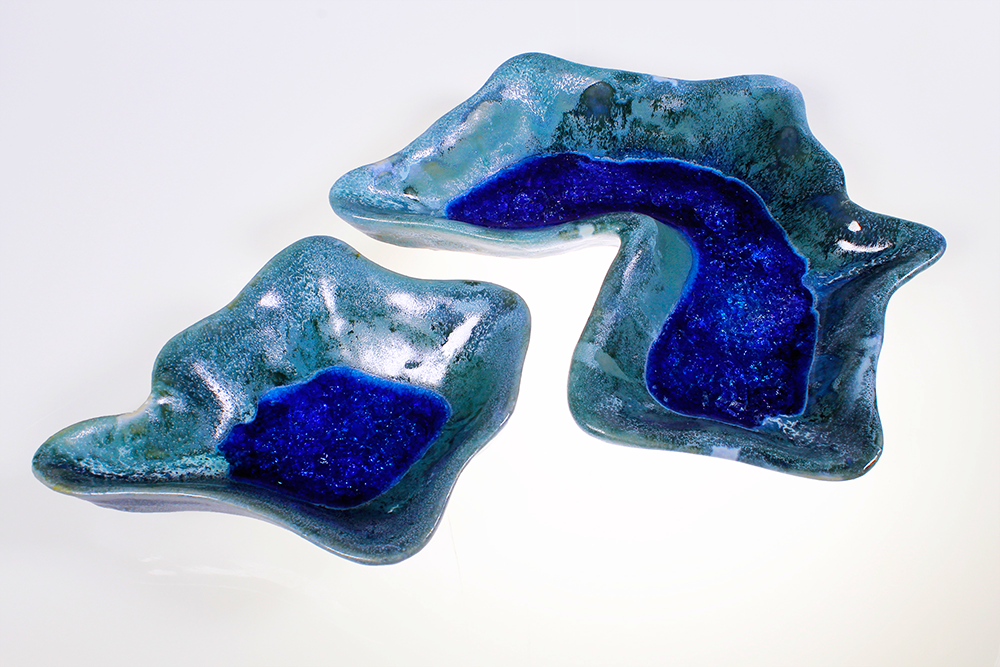

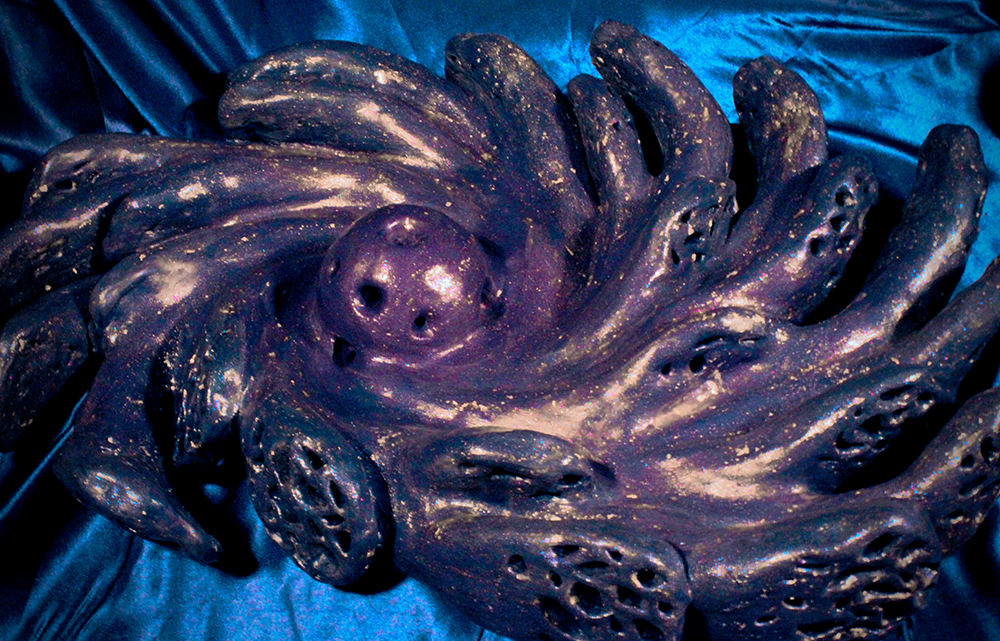
Some of my different ceramic pieces from over the years
And if you'd like to listen while working on art, like I do, you can get a 30-day free trial of Amazon Prime Music or Two Free Audiobooks from Audible Plus!
I love listening to awesome music or a great book while immersing myself in the creative process!
And if you want to take advantage of 2-day shipping, get a free 30-day trial of Amazon Prime!
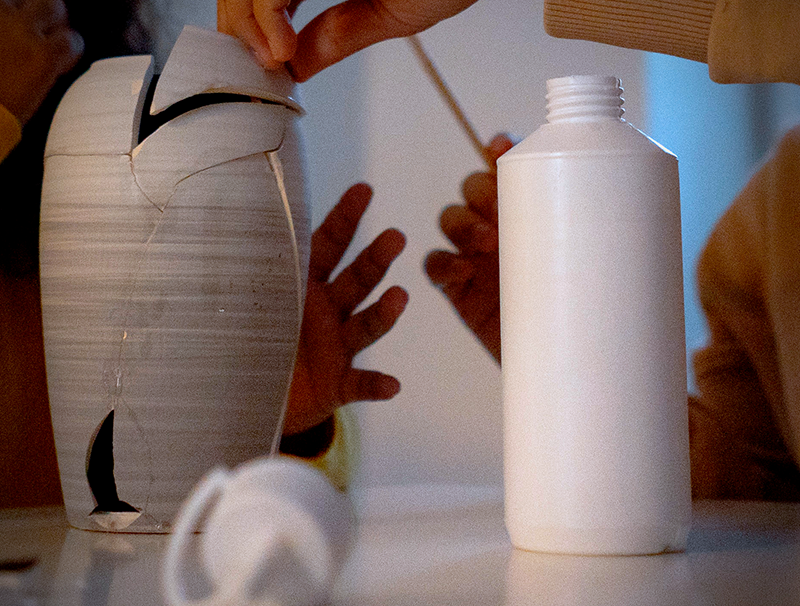
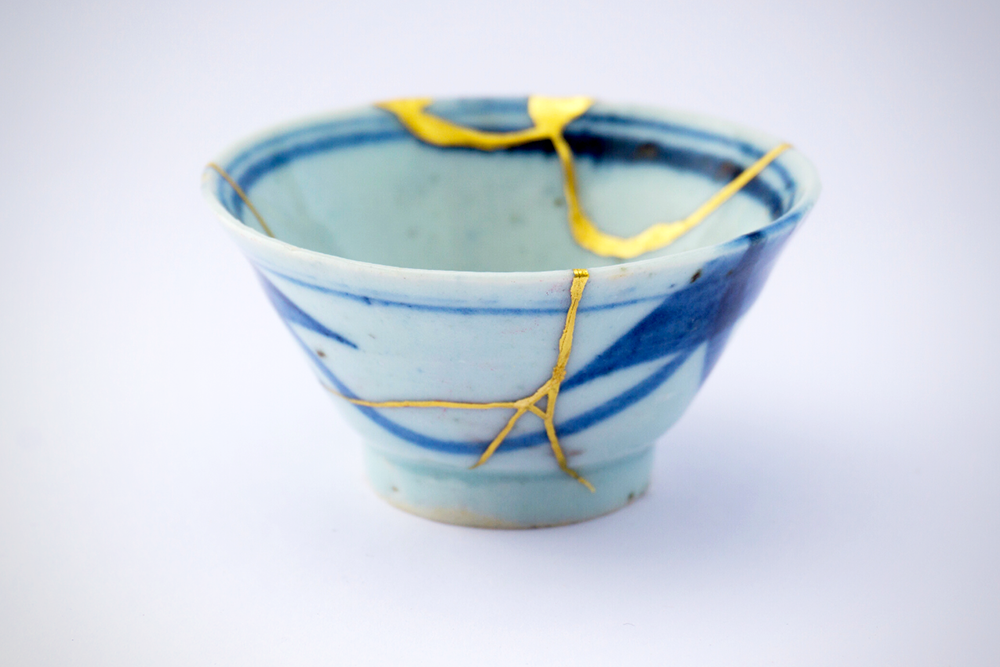
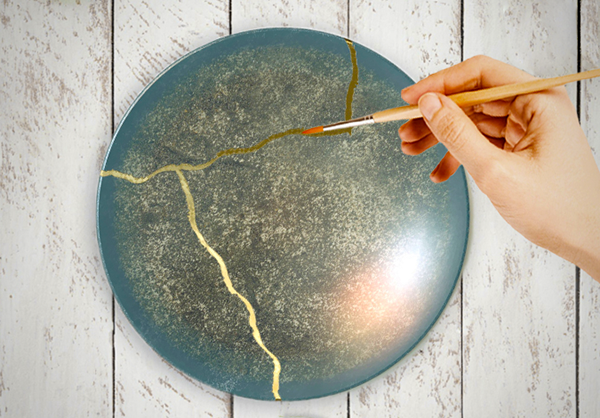
Want even more content about creativity and art?
Be sure to check out all of our creative chronicles!
Love pottery and working with clay?
Check out some of our other ceramic articles:


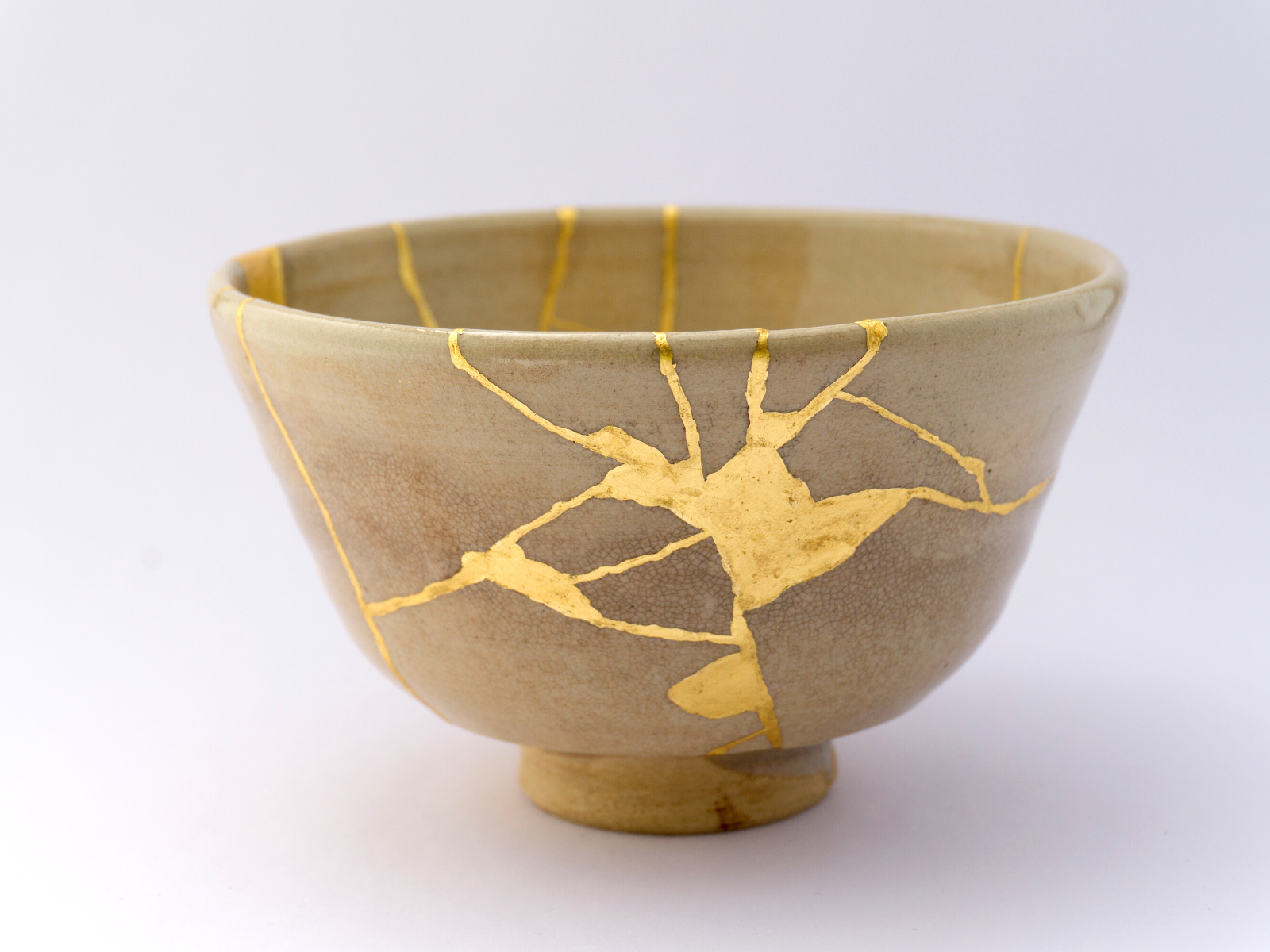
Looking to make repairs and DIY projects?
Check out our adhesive supply articles:


